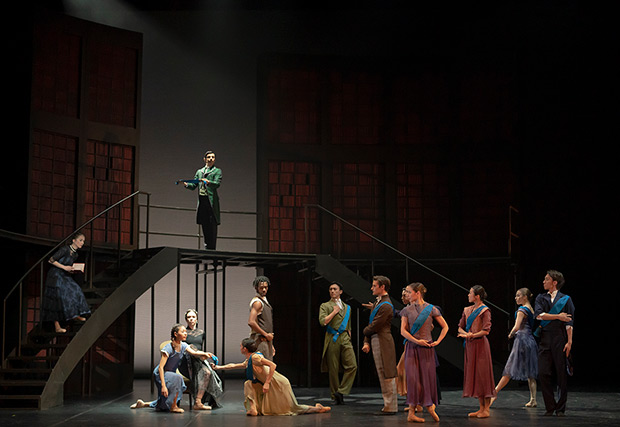
© Emma Kauldhar. (Click image for larger version)
Northern Ballet
Victoria
★★★✰✰
Leeds, Grand Theatre
9 March 2019
Interview with Cathy Marston about Victoria
northernballet.com
www.leedsgrandtheatre.com
Cathy Marston is riding the crest of a wave at the moment with many works in the repertoire of companies across North America and Europe, directors worldwide clamouring to give her new commissions and a newly won National Dance Award for her choreography. She specialises in story ballets and back in 2016 created a splendidly clear and moving version of Jane Eyre with Northern Ballet, which American Ballet Theatre is premiering at the Met in New York this June – what greater endorsement? Clear too were recent works for Ballet Black (The Suit which won the award), San Francisco Ballet (Snowblind) and her Dangerous Liaisons for Royal Danish Ballet, gorgeously coupling dance and drama so that even a dullard like me could readily follow it.

© Emma Kauldhar. (Click image for larger version)
All eyes have been on Marston’s latest project with enormous pre-show publicity for Victoria – her, and dramaturg Uzma Hameed’s, take on the life of Queen Victoria. It’s unusual for Marston to take on the life of a real person (rather than a story inspired by a literary work) which comes with all the carbuncles and oddities of a life lived. How to distil down such an enormous character – she ruled for over 63 years – and give it a fresh take, is a huge undertaking. They decided to tell it through the eyes of Victoria’s youngest daughter, Beatrice, whose life in many ways paralleled Victoria’s in knowing love, devotion to duty and a long widowhood. After Victoria’s husband, Albert, died, Beatrice became her constant companion and even marriage didn’t allow her to break free. Importantly, after Victoria’s death, Beatrice (herself a widow by then) took custody of the queens journals (all 122 of them) and rewrote them, rather sanitising them as she did. It’s the process of this rewriting that Marston catches and it inspires the showcasing of key scenes from Victoria’s long life. The programme constantly alternates sections entitled “The past” and “The present”, if in reality the character of Beatrice nearly always seems to be on stage scribbling away on the diary re-write. The staging itself is set in a huge, floor to ceiling, private library, emphasising the enormity of Beatrice’s task in editing and reviewing a life. The scenes unfold before her, occasionally wiped away, or introduced, by the passing swoosh of a dividing curtain. Good sets by Steffen Aarfing.

© Emma Kauldhar. (Click image for larger version)
“There are no mothers-in-law in ballet” is George Balanchine’s famous aphorism about how hard and unprofitable it can be to try and convey some relationships in dance. And it came to mind as I got rather lost in some sections of Victoria – particularly the first act. Balanchine calls up mothers-in-law, and I’d add politicians to the list, that and trying to differentiate Victoria’s nine children and their various partners. We actually see the births of all nine at one point and by the time of birth three I’d more than twigged what was happening, and wanted to fast forward but felt trapped in a silly Groundhog Day experience. It’s actually a reference to Albert’s production line desire to create a dynasty with links across Europe and while truthful, it’s not moving or particularly riveting. There are also sections involving (Benjamin) Disraeli, (William) Gladstone and Lord Melbourne and unless you have done your homework, you might well find it hard to decipher what’s happening from the movement alone. That’s a shame and rather a retrograde step.
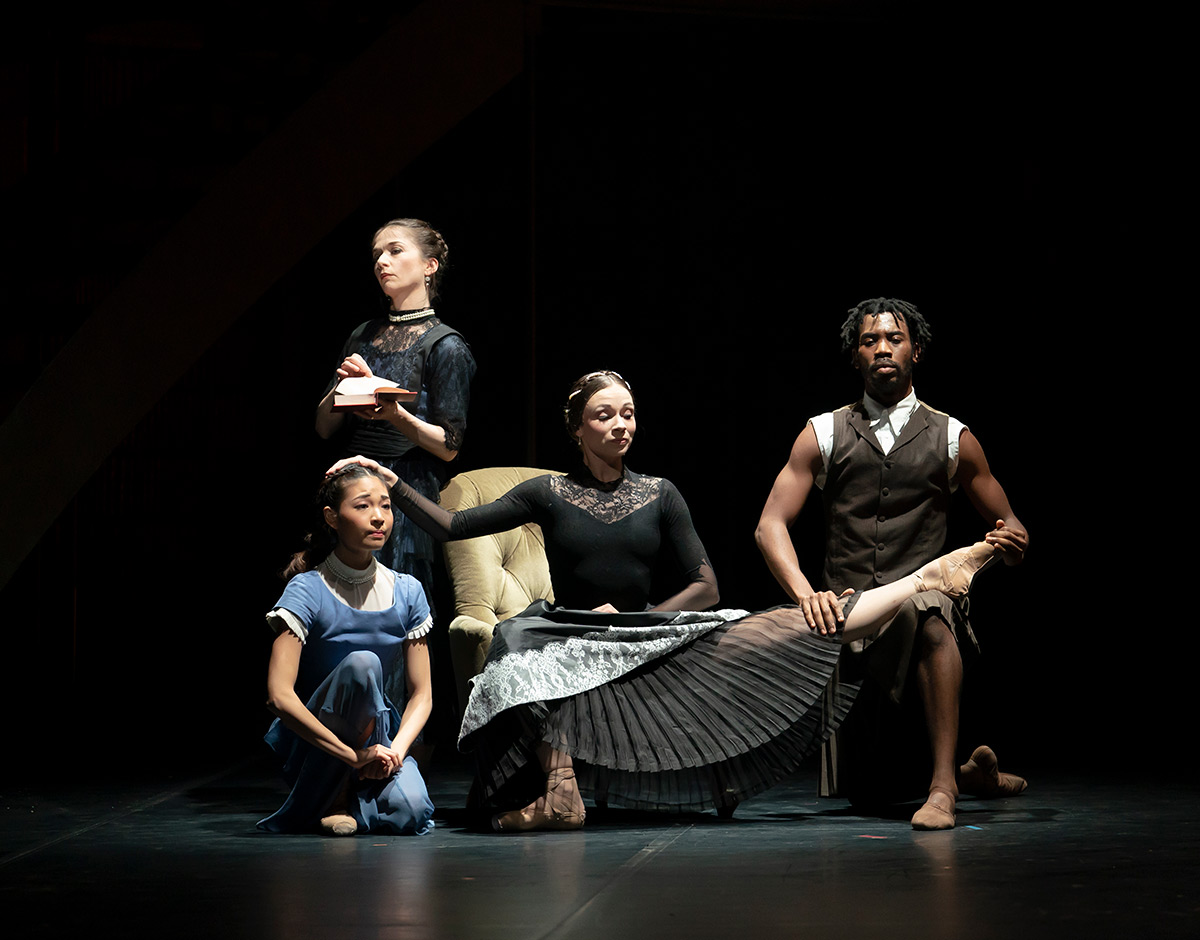
© Emma Kauldhar. (Click image for larger version)
Where the ballet takes off is when there are only two or three major characters on stage and then Marston clearly shows intentions and emotions and the dancing becomes rich and telling, clever and gorgeous. The scene showing Victoria’s loving and close relationship with Scottish manservant John Brown chimes particularly and the casting and dancing of Mlindi Kulashe really underlines his different relationship with the world of court. Another strong scene clearly shows Albert trying to meddle with the affairs of state as he and Victoria ‘fight’ around the red boxes of government papers. And the initial rapture of falling in love for both Victoria and Beatrice is handled with beguiling sensitivity, if one wishes that Philip Feeney’s score perhaps punched home the stirring movement with greater vigour. It has the colour of good cinematic music, but needed wider dynamic range to hit us in the guts at crucial moments.
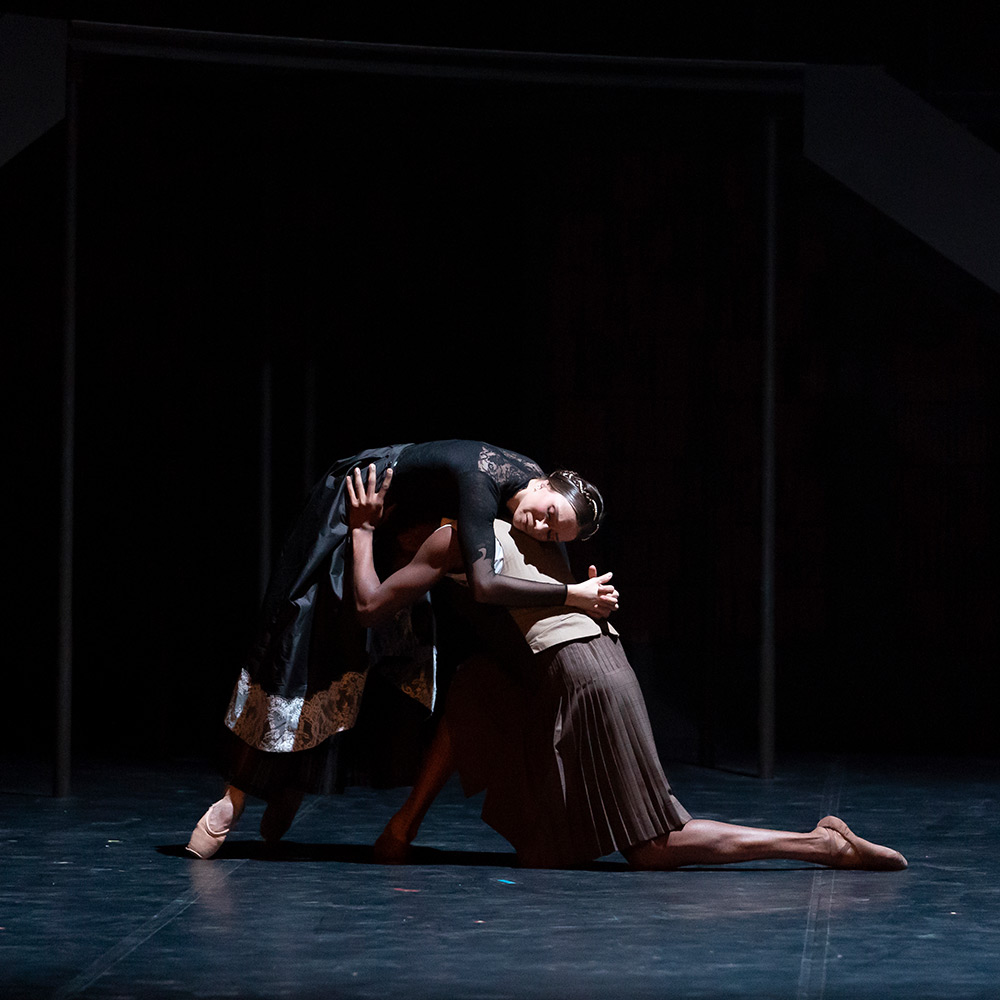
© Emma Kauldhar. (Click image for larger version)
Northern Ballet dancers give their all, they really do, if in costumes that occasionally feel rather flimsy. The great polish Northern achieved for Casanova doesn’t seem to apply here. The female costume designs come off best and the military costumes for the men look hastily fitted and of thin material that doesn’t hang well. And the men’s hair looked strangely 21st century rather than of the period. Strange too are the red skirted “Red People” that wander around as possible librarians, servants, soldiers – are they distorted dreams? There is no mention in the programme. In Jane Eyre it seemed clear what the flights-of-thought D-Men were about.

© Emma Kauldhar. (Click image for larger version)
As the leads Abigail Prudames (Victoria) and Pippa Moore (Older Beatrice) are hardly ever off of the stage, if combinations of state pageantry and much miming of scribbling words can’t always be so rewarding to dance. But as I say there are real jewels of scenes in Victoria, not least the end which is enormously touching and well judged. Victoria is now on national tour and gets to London’s Sadler’s Wells in 2 weeks, when we will be reviewing again (with different eyes) to see how it is settling in. Premieres are wonderful things, but works do adjust and as we all see ballets again we often notice new and clever things. Marston has certainly created a work of many layers and enormous span – regulars will be unpacking it for years, I’m sure. Newbies – read up!













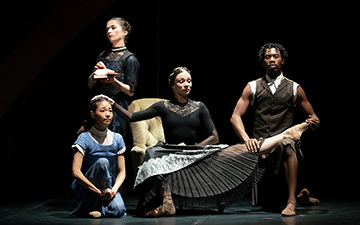

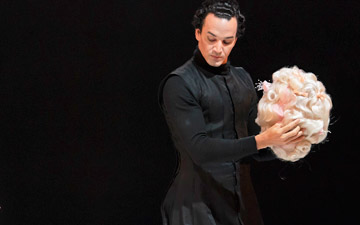
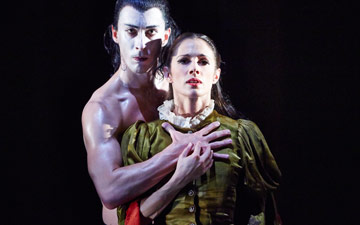
You must be logged in to post a comment.